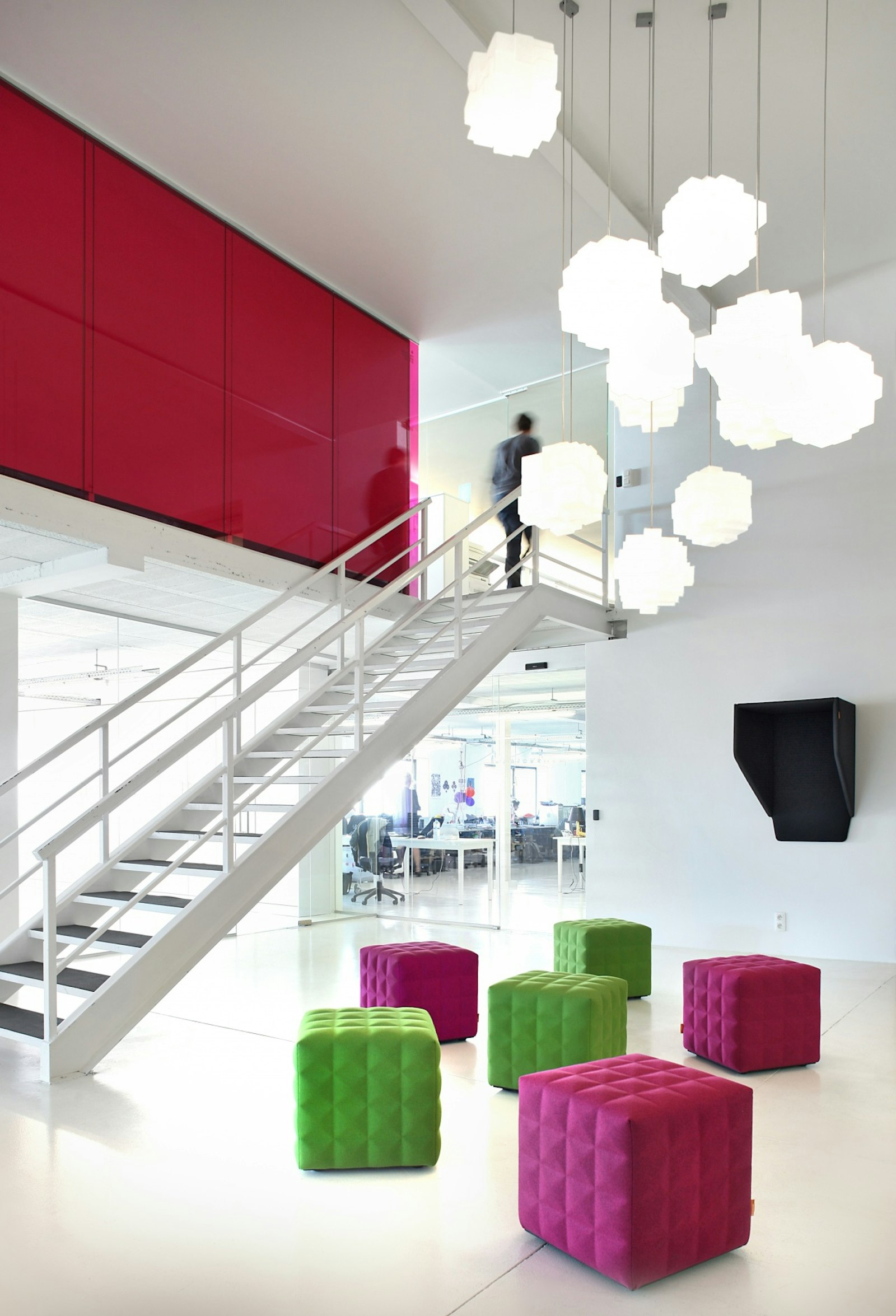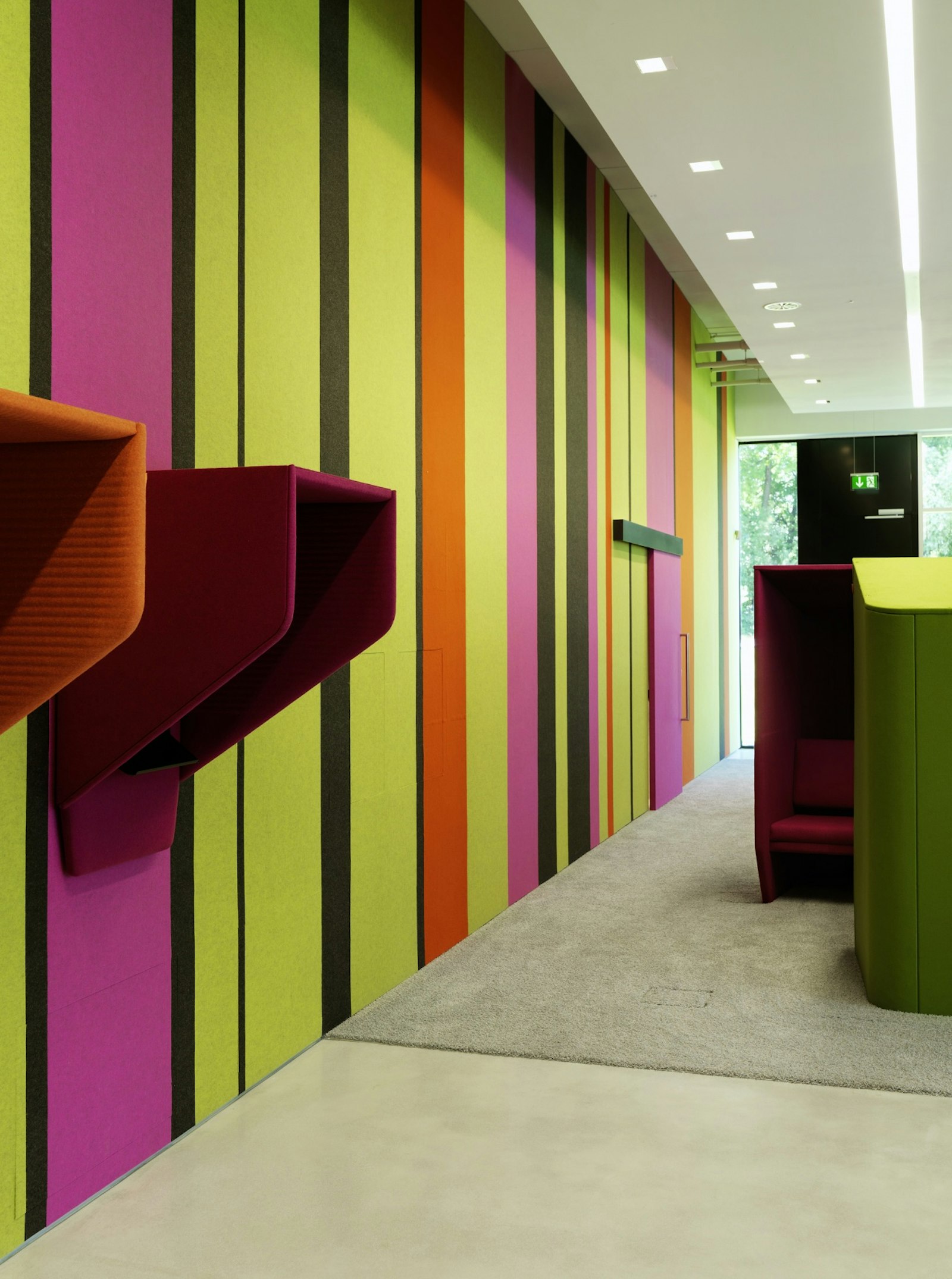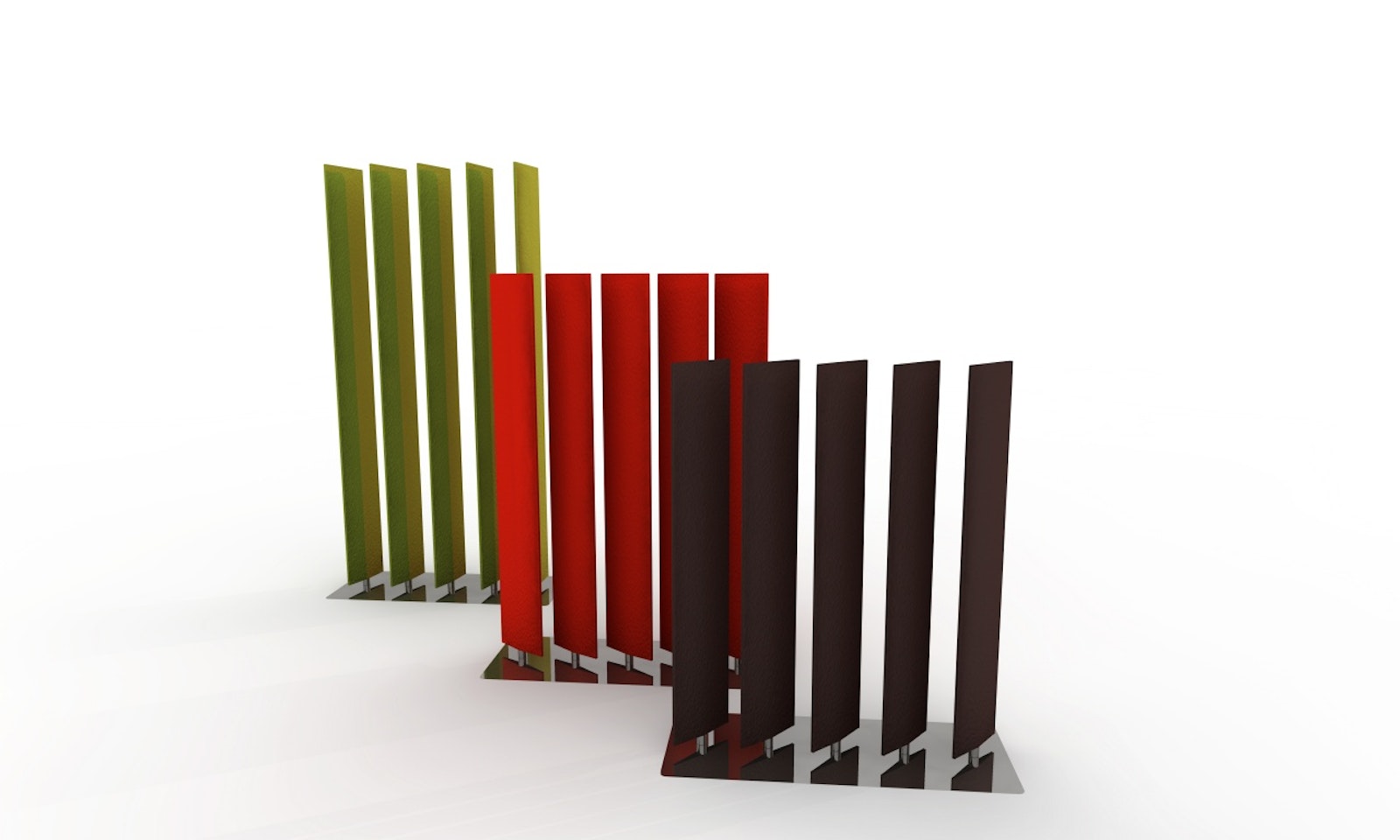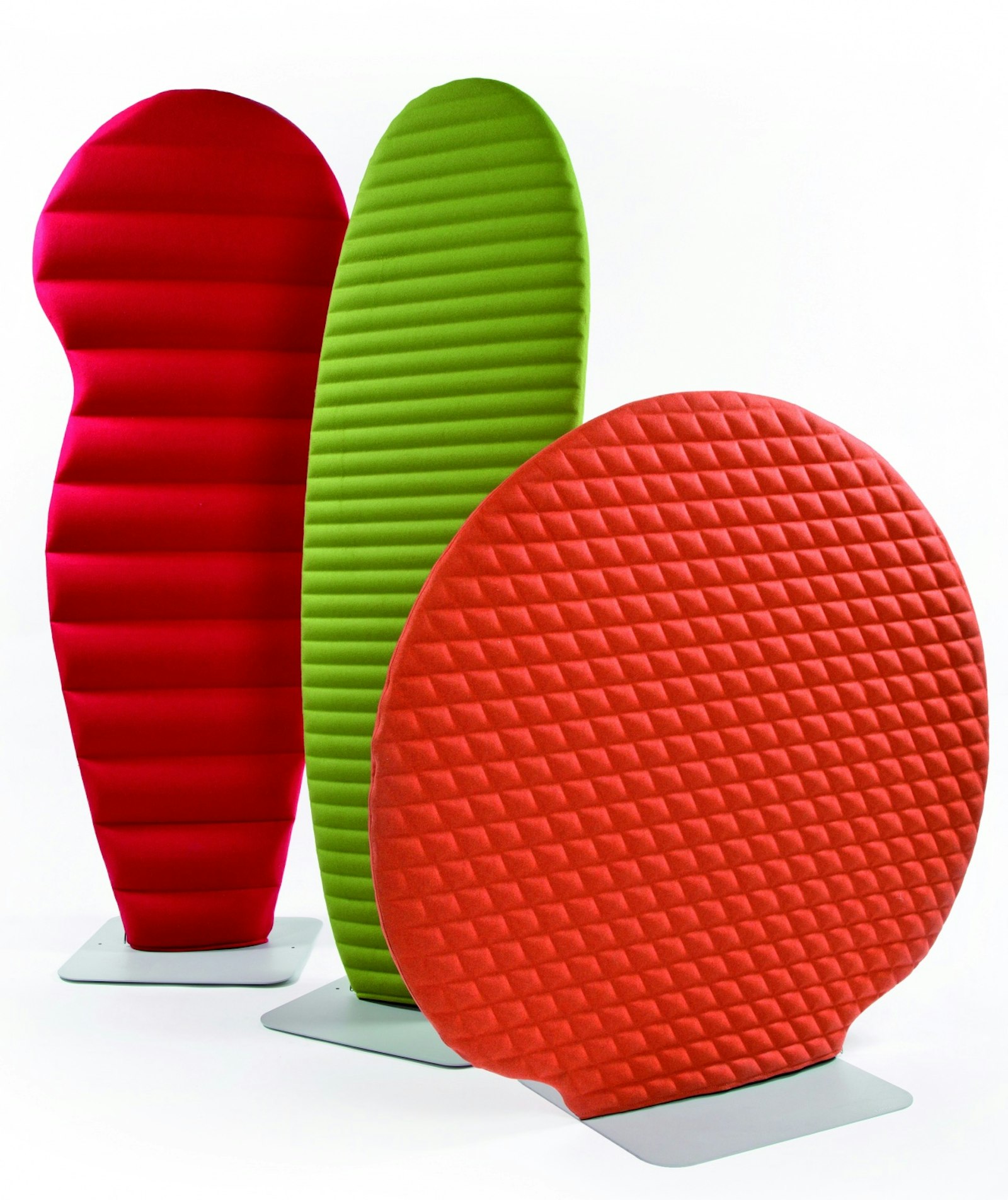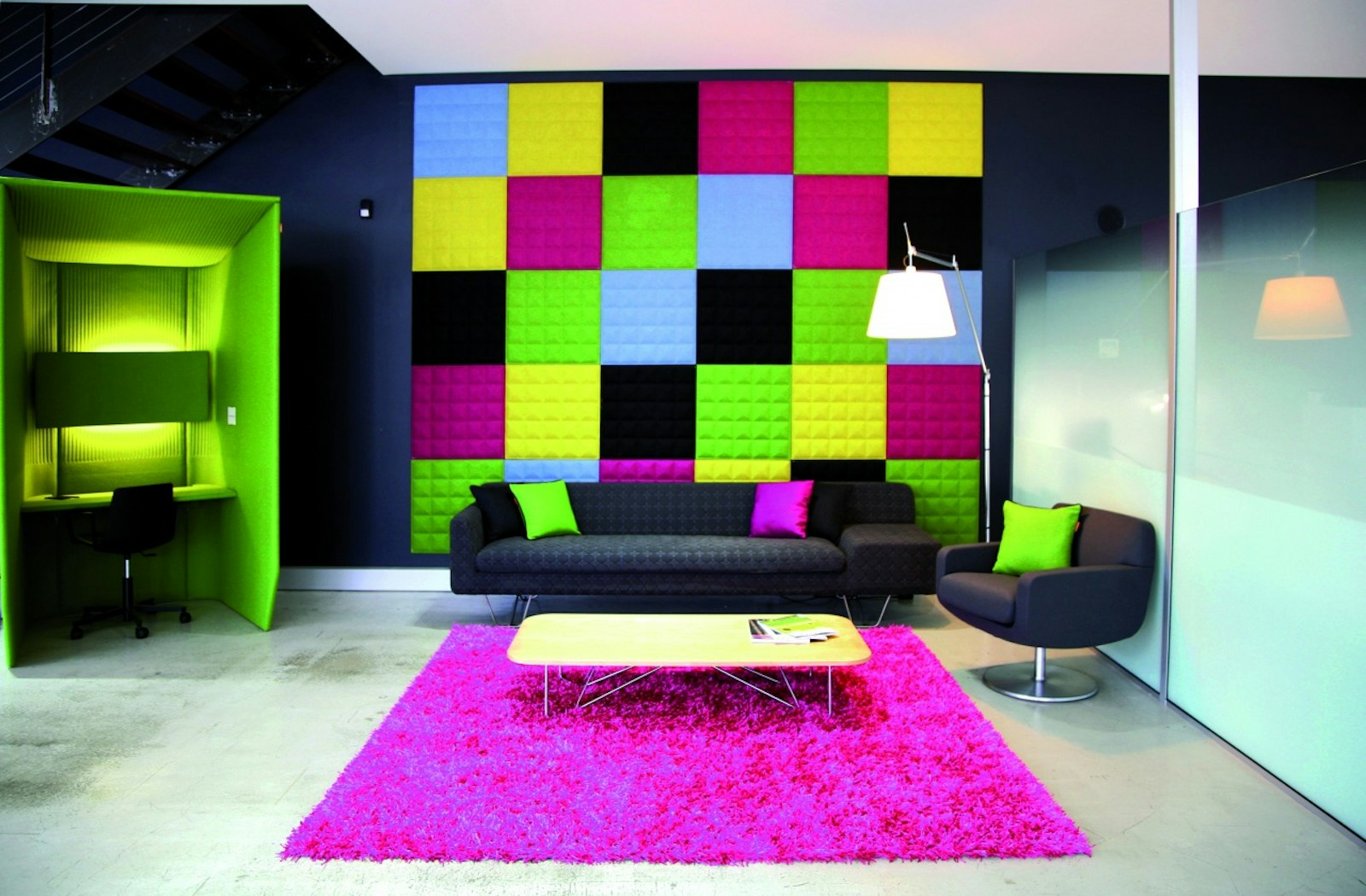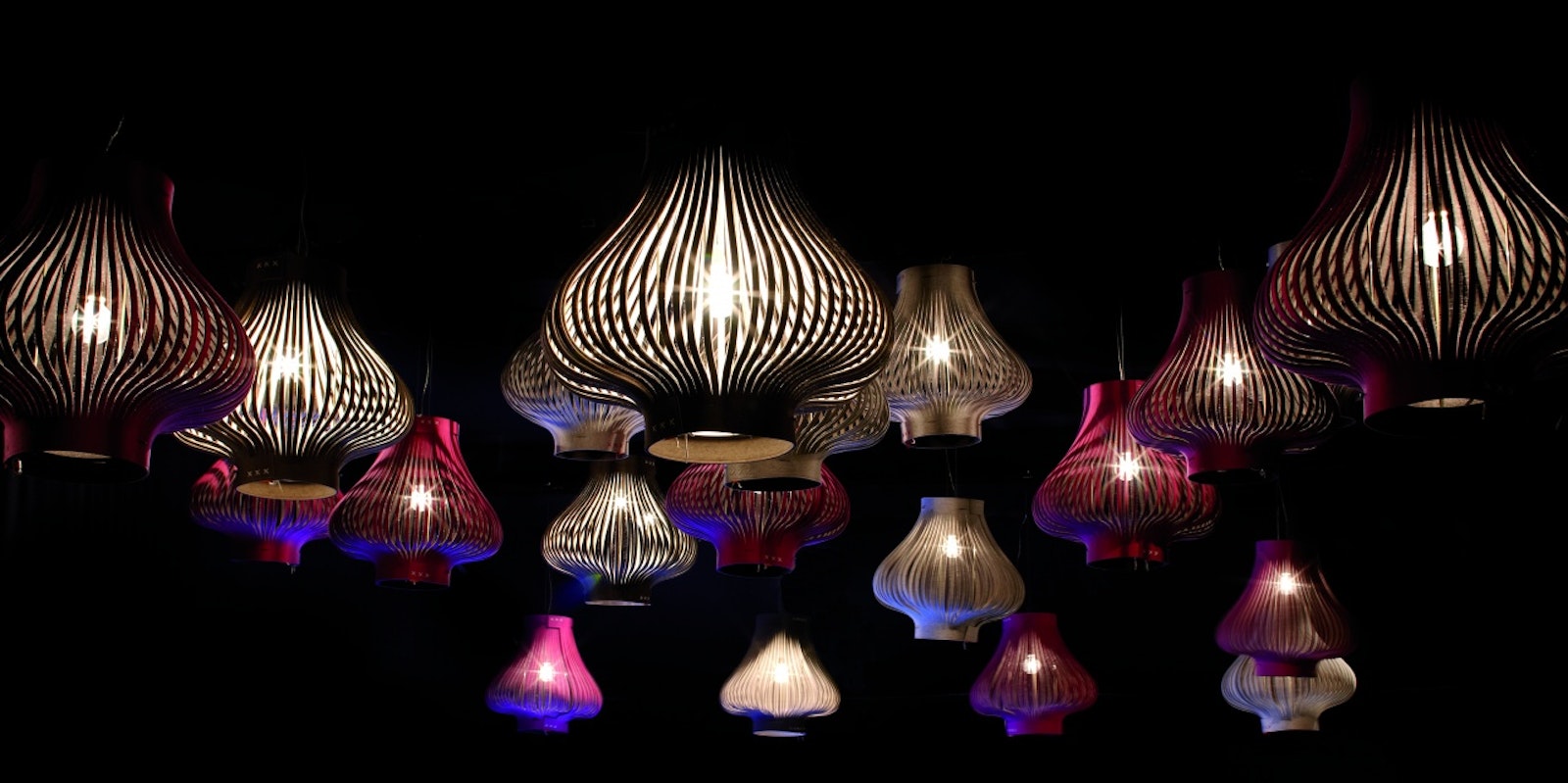What has Steve Symons learned in the design world? “Never blindly follow what other people say!” Lots of successes are shouted from the rooftops, but the sales figures tell the real story. This is why they work the international market on a daily basis. BuzziSpace attends trade fairs around the world, and not just the best known fairs, but new ones like Qubique in Berlin. The fact that BuzziSpace achieved success in less than 5 years is no miracle, but the reward for all their hard work!
de Velde
BuzziSpace
He shared digs with a few student architects and used to lend a hand when they were making models and doing projects. In 1995 he set up his own business: TecnoSpace. In the early days they focused on the management of corporate relocation projects, but this soon developed into the fitting of wall systems. TecnoSpace Space Dividers are flexible wall systems that are easy to (re)assemble and move, yet have plenty more to offer in the way of style, functionality and acoustics. Working in tandem with its subsidiary Debaere, a fitter of plasterboard and acoustic ceilings, TechnoSpace can tackle just about any office fitting project.
A few years ago, when TecnoSpace was asked to fit out offices belonging to trade fair organisers Artexis, they were also asked to take part in one of their fairs. Nothing is ever that simple. Artexis interior fairs are mostly geared to the public, but at that time TecnoSpace didn’t really have a product that was suited to the private market. A little later Design Brussels was organised in Brussels, as part of Cocoon, and this seemed the ideal time to launch. In May, Sas Adriaenssens was commissioned to design a sound-absorbent felt product made from recycled materials. The initial results were presented in November under the name TecnoCoustics. To their amazement the product won them a Design Brussels Award and brought them in contact with Design Flanders. Johan Valcke suggested that Steve take part in the group stand at the Milan fashion fair in 2008.
The material is not the only element of the product with ecological credentials. The cradle-to-cradle principle is applied wherever possible in the production process. Besides BuzziFelt, the company has developed BuzziFabric, a material for seating elements that contains 70% recycled wool, 25% recycled polyacrylate and 5% recycled material off-cuts. The material can also be used in smaller runs and the number of colours available has now reached twenty.
BuzziSpace sets high acoustic requirements for its products. Today’s open plan offices require good sound absorption, achieved through the material itself and through its design. All products have their own resonance time. BuzziSpace aims to achieve optimal sound absorption within speaking distance. The BuzziBooth gives you a sense of quiet even in the noisiest of open spaces. BuzziSkin sells as a felt wallpaper, available in 10-metre rolls.
Whereas the first generation of products was made of smooth felt, a second generation, 3D felt has been on the market for a while now. They met a caravan upholster from the Netherlands which wasn’t quite up to speed with the latest developments in the sector, but was in possession of some innovative 3D technology. With this technique, which does away with the need for moulds, you can manufacture small series or unique pieces. In the end they bought out the Dutch business and now produce materials not only for themselves, but also for Kvadrat, MDF Italia and B&B Italia.
Sas Adriaenssens provided the designs at the very beginning, but BuzziSpace now works with designers like Alain Gilles and Anthony Duffeleer too. They have projects in the pipeline with big international names like Alfredo Häberli and Roger Webb, and at Orgatec 2012 the company intends to launch a revolutionary design by the designers Couvreur-Devos.
Last year BuzziSpace increased its turnover by a factor of 10. They are particularly active in the office market. Architects are learning about their products and getting to know more about the possibilities they offer. The home market is harder to penetrate, because it is a lot more traditional and governed to a much larger a degree by prevailing prices. This is why they work with several office equipment manufacturers. They also try to set their prices just below those of the main international players. Ninety percent of this turnover is generated through exports. The biggest customer is in Australia, but France is doing really well too, while Germany is a little more conservative. There are new customers in India and Italy. In January BuzziSpace is opening its own showroom in Clerkenwell, London’s design area. In November they attended the Boutique Design New York in the United States, where they were asked to fit out a lounge. In June 2012 they will be at NeoCon in Chicago with a showroom of their own for the first time. In view of the enormous growth potential, they are now also turning their sights to Asia.
